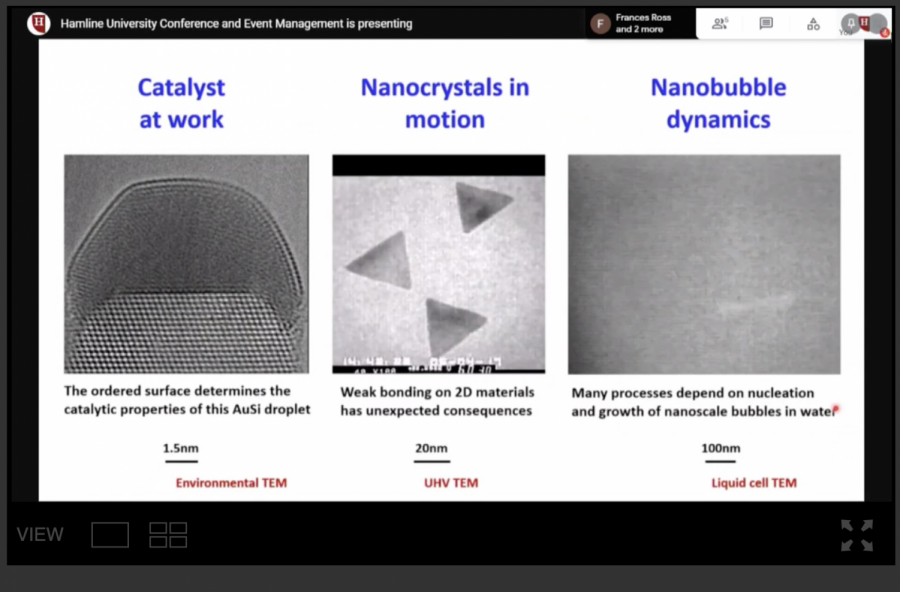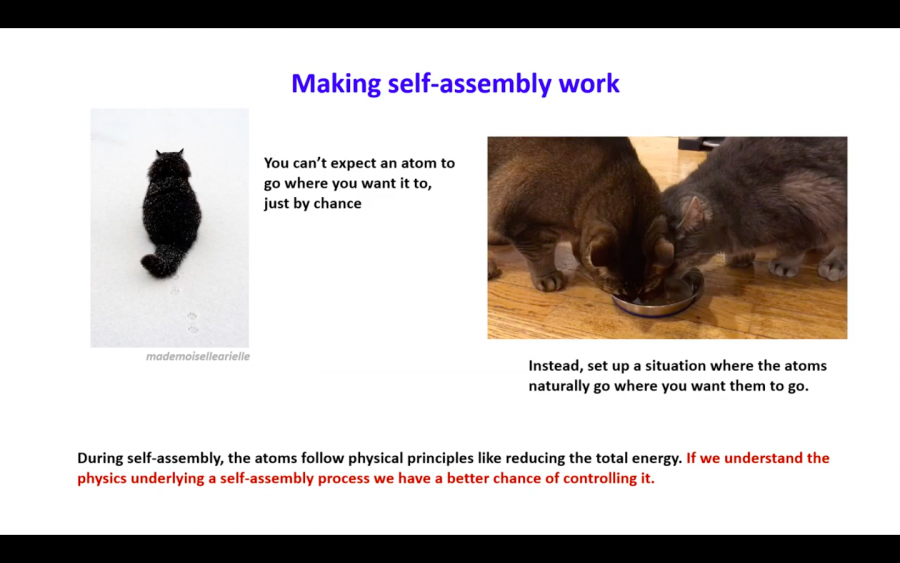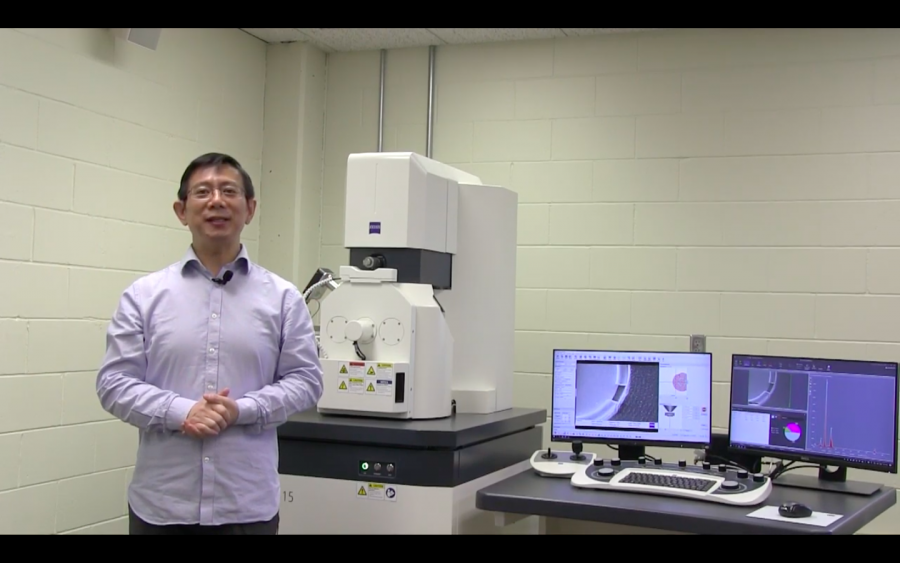Crystal growth: a cinematic event
The physics department held its 29th annual Kay Malmstrom lecture. This year’s guest was Frances M. Ross, a Cambridge alum and current MIT professor, who presented her research on crystal growth.
Lauren Thompson
Chair of the physics department, professor Lifeng Dong, stands beside Hamline’s new electron microsope. Dong encourages students interested in using the new technology to reach out to him.
November 25, 2020
Bottle rockets and egg parachutes are some quintessential experiments done in high school physics classes. Mathematics is the skill associated with the field. Not many people think of cinematography and photography when it comes to physics research. This year’s Kay Malmstrom lecture on Microscopy in Motion was presented by MIT professor Frances M. Ross. Attendees were not just educated on the material science surrounding crystal growth but were also shown mini-movies of the processes as well.
First-year physics student Josh Sedarski was featured at the beginning of the lecture and was responsible for behind-the-scenes work for the event. Additionally, he is working on bringing in students to use Hamline’s new electron microscope.

Presentation slides from this year’s Kay Malstrom lecture in physics. Guest lecturer Professor Frances M. Ross presented on the capabilities and experiments pertaining to crystal growth, made possible with an electron microscope. Electron microscopy allows for the real-time analysis of crystallization processes.
“As I had been preparing for this all semester, it was pretty satisfying to see it come together,” Sedarski said.
Microscopic images were used to explain the benefits of nanoscience, the process of self-assembly, catalysts, molecular bonding and more. In Situ, electron microscopy is when researchers use real-time analysis of a process to investigate their physical properties. Viewing the resulting footage can be much like watching a film.
“It’s great to take pictures, even better to make movies,” Ross said.
That night, audience members were able to watch footage of Ross’s scientific research about how crystal versions of various chemicals grow spontaneously on different materials. She explained the scientific tools she used as well as the “human element” – her term to describe human error – behind the research, emphasizing that the final report is never the whole story.

Presentation slides from this year’s Kay Malstrom lecture in physics. Guest lecturer Professor Frances M. Ross presented on the capabilities and experiments pertaining to crystal growth, made possible with an electron microscope. Electron microscopy allows for the real-time analysis of crystallization processes.
“[It] definitely helps to visualize,” Sedarski said. “Maybe you’re drawing a diagram so you can see how to work a problem. Get a full scope of the problem.”
Chair of the physics department, professor Lifeng Dong, reflected on the benefits of a liberal arts education and how art and physics intersect.
“A good sign of an engineer is how they can express results to the community,” Dong said.
In the hardship of 2020, it has been a challenge to cultivate hope, resilience and joy. Dong spoke about how the research process can help.
“Research is about challenges, difficulty and never giving up,” Dong said. “We cannot let the situation stop us.”
Dong hopes that students can be inspired by Ross’s research. He mentioned that the physics department is doing everything it can to maintain social distancing rules while trying it’s best to continue the research process.
The Microscopy in Motion event can be watched on YouTube at https://www.youtube.com/watch?v=qJVt5Dv7i4c&feature=youtu.be. Viewers can also investigate Hamline’s new electron microscope. Dong encourages any interested students to reach out to him and get a tour.

